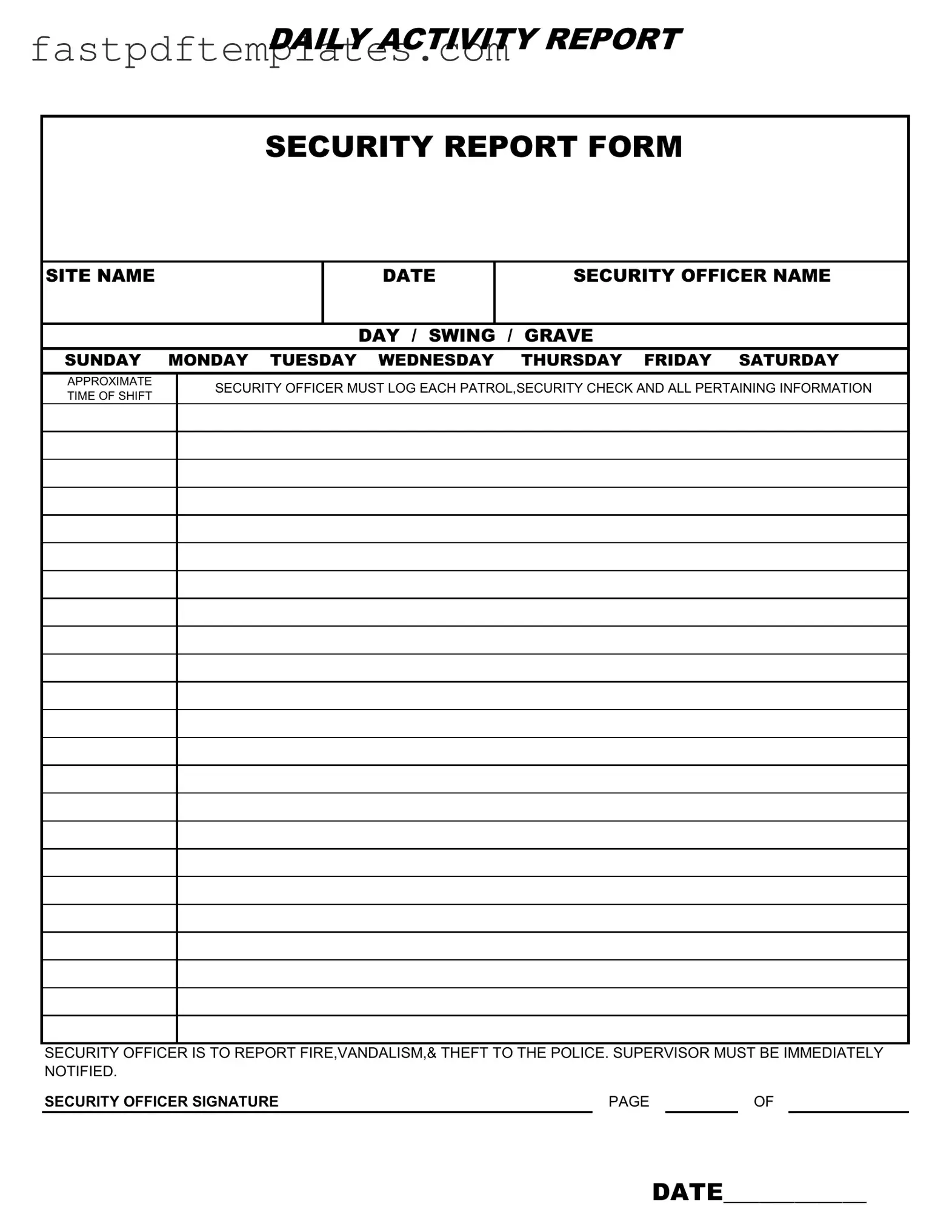The Incident Report is a document that shares similarities with the Security Guard Daily Report. Both forms serve to document specific occurrences that take place during a shift. While the Security Guard Daily Report focuses on daily activities and routine checks, the Incident Report is more detailed regarding unusual events, such as accidents or security breaches. This document typically includes descriptions of the incident, involved parties, and actions taken, ensuring that all relevant details are recorded for future reference or legal purposes.
The Patrol Log is another document akin to the Security Guard Daily Report. It is primarily used to track the movements and activities of security personnel throughout their shift. Like the Daily Report, the Patrol Log requires officers to note the times and locations of their patrols. However, it often emphasizes the frequency and duration of patrols, providing a more granular view of security operations. Both documents are vital for maintaining accountability and ensuring that security measures are effectively implemented.
The Shift Report also shares a common purpose with the Security Guard Daily Report, as it summarizes the activities and incidents that occurred during a specific shift. While the Daily Report may include routine tasks and observations, the Shift Report often highlights any significant events or changes that occurred during that period. This can include staffing changes, equipment issues, or notable interactions with the public. Both reports help management assess the overall effectiveness of security measures and personnel performance.
The Visitor Log is another document that complements the Security Guard Daily Report. This log records all visitors entering and exiting a facility, capturing essential information such as names, times, and reasons for visits. While the Daily Report focuses on the security officer's activities, the Visitor Log provides context about who was present at the site during a specific time frame. Together, these documents create a comprehensive picture of security operations and visitor management.
Lastly, the Security Incident Log is similar to the Security Guard Daily Report in that it documents security-related events. However, this log is more focused on tracking incidents that require immediate attention, such as thefts, altercations, or emergencies. It serves as a real-time record of events that may need to be addressed by law enforcement or management. Both documents play a crucial role in maintaining safety and security, allowing for thorough reporting and analysis of incidents that occur on-site.

